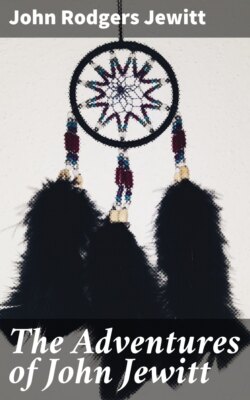Читать книгу The Adventures of John Jewitt - John Rodgers Jewitt - Страница 5
На сайте Литреса книга снята с продажи.
FOOTNOTES:
ОглавлениеTable of Contents
[1] Rubus Nutkanus.
[2] Rubus spectabilis.
[3] Gaultheria Shallon.
[4] Vaccinium ovatum.
[5] Pyrus rivularis.
[6] Ribes sanguineum, now a common shrub in our ornamental grounds.
[7] Echinopanax horridum.
[8] Thuja gigantea, a tree which to the Indian is what the bamboo is to the Chinese.
[9] Acer macrophyllum.
[10] Cornus Nuttallii.
[11] Arbutus Menziesii.
[12] Selasphorus rufus. It is one of one hundred and fifty-three birds which I catalogued from Vancouver Island (Ibis, Nov. 1868).
[13] Scenes and Studies of Savage Life (1868), by the Hon. G. M. Sproat, late Commissioner of Indian Affairs for British Columbia.
[14] "Pachena" of the Indians.
[15] Or, as they call themselves in their dialect of the Aht, "Dittinahts." Nettinaht is a white man's corruption.
[16] A few years earlier they were estimated at a thousand.
[17] "Klootis" of the Indians.
[18] Known to them as "Etlo."
[19] They were not permitted this privilege until the whites came to Alberni in August 1860.
[20] Though the orthography of these names is often incorrect, and not even phonetically accurate, I have, in order to avoid the mischief of a confusion of nomenclature, kept to that of the Admiralty Chart.
[21] This was the Banfield who acted as Indian agent in Barclay Sound. He was drowned by Kleetsak, a slave of Kleesheens, capsizing the canoe in which he was sailing, in revenge for a slight passed upon the chief. I went ashore at the Ohyaht village in the same canoe, and was asked whether I was not afraid, "for Banipe was killed in it." There was also a story that the capsize was an accident.
[22] It may be proper to state in this place that the interior details of that chart are, with very few exceptions, from my explorations. But the map on which they were laid down by me has been so often copied by societies, governments, and private individuals without permission (and without acknowledgment), that the author of it has long ceased to claim a property so generally pillaged. The original, however, appeared, with a memoir on the interior—"Das Innere der Vancouver Insel"—which has not yet been translated, in Petermann's Geographische Mittheilungen, 1869.
[23] Or Berkeley—for the name is spelt both ways.
[24] Destruction Island, in lat. 47° 35'. This was almost the same spot as that in which the Spaniards of Bodega's crew were massacred in 1775, and for this reason they named it Isla de Dolores—the "Island of Sorrows." It is in what is now the State of Washington, U.S.A.
[25] Green Low will even blame Wikananish, who figures in Jewitt's narrative, as the instigator of the outrage.
[26] The Nahwitti Indians. Compare the Tlā-tlī-sī—Kwela and Nekum-ke-līsla septs of the Kwakiool people. They now inhabit a village named Meloopa, on the south-east side of Hope Island. But their original hamlet was situated on a small rocky peninsula on the east side of Cape Commerell, which forms the north point of Vancouver Island. Here remains of old houses are still to be seen, at a place known to the Indians as Nahwitti. It was close to this place that the Tonquin was blown up.—Science, vol. ix. p. 341.
[27] "Maccay" (Meares); "M'Key" (Dixon).
[28] There is a portrait of him, apparently authentic, in Meares's Voyages, vol. ii. (1791). That in the original edition of Jewitt's Narrative, like the plate of the capture of the Boston, appears to have been drawn from description, though there is a certain resemblance in it to Meares's sketch made fourteen or fifteen years earlier. But the scenery, the canoes, the people, and, above all, the palm trees in Nootka Sound, are purely imaginary.
